WL Mayor Easter: ‘Still confident in SK hynix.’ A Q&A
As pushback and community meetings continue, West Lafayette’s mayor defends neighborhood questions while standing by SK hynix’s $3.87B plans ahead of a city council zoning vote
With a West Lafayette City Council rezoning vote crucial for a $3.87 billion project from SK hynix scheduled for May 5, Mayor Erin Easter said she stands by the South Korean semiconductor company’s plans to build an advanced chip packaging facility north of Kalberer Road.
In a conversation Wednesday at city hall, Easter said she understands the questions raised in recent weeks by neighbors who’ve argue the proposed 430,000-square-foot facility doesn’t belong near their subdivisions.
And she said she knows there’s work to be done to ease minds on the nine-member city council, after late-blooming protests over environmental, traffic and issues with the sheer scale of the project led to a 9-5 vote by the Area Plan Commission on March 19 to recommend denial to rezone 121 acres in the Purdue Research Park – north of Kalberer Road, between Yeager Road and Salisbury Street/County Road 50 West – from residential to industrial uses.
“The job now is to get everyone the answers they’re looking for,” Easter said.
SK hynix and Purdue Research Foundation, a private arm of the university that owns the property, will host the second of three community meetings at 6:30 p.m. Thursday at the John Dennis Wellness Center, looking to make its case with skeptical neighbors.
SK hynix’s facility would use a process called packaging to stack multiple chips made in other fabs to produce high-bandwidth memory used to supply Nvidia, the leader in a booming AI market. If the rezoning request fails, SK hynix officials have said in recent weeks that they would move the facility back to what it calls Site A, which includes more than 90 acres on the west side of Yeager Road, several hundred yards from the Site B that is up for rezoning and that the company prefers.
Easter said Wednesday in an extensive Q&A that she hopes it doesn’t come to that, a year after SK hynix announced plans to come to West Lafayette in a CHIPS Act-era deal touted as one of the biggest in Indiana economic development history and key in bringing semiconductor R&D and manufacturing in the name of U.S. national security and shoring up supply chains.
Question: Let’s start here. What was going through your mind as you heard that APC vote come back recommending denial of the rezoning request, nearly a year after the SK hynix plans were announced?
Erin Easter: One, in West Lafayette, we go out of our way to get public input on all kinds of things. I’m thinking about our Public Safety Center, our Wellness Center, our five-year parks master plan, our strategic plan. We do a lot of information gathering from our community, so we know how important it is to engage with citizens early. And SK has offered their apology that they didn't do that from the beginning, which I think would have really changed the conversation that we're having today. Because they could have answered some of these really complex and technically difficult questions and gotten answers to have the level of comfort that many of us do, who have had face-to-face conversations with SK several times about the more difficult content and some of the difficult questions you need to ask any company that would be locating in your community. Especially a company like SK.
Question: Did you feel you were asking the same questions early on that neighbors are asking now? Do those sound familiar, or are they different?
Erin Easter: Absolutely, a lot of those questions early on were understanding how the process works relative to how the process worked 20 years ago. I mean, 20 years ago, you wouldn't be recording this interview on an iPhone, because iPhones didn't exist. So, understanding what has changed in that period of time, asking a lot of questions about processes and types of processes, obviously. I've been involved in discussions with several companies over the course of many years. There are some things that we know to ask about. This is a little different, right? I think that gives a reasonable amount of concern. I think specific to SK and advanced packaging and what they're doing relative to what we see happening with Nvidia, that is a really, really different process than we are used to. It doesn't mean that we can't figure out how to do it effectively, responsibly and safely. We have asked a lot of those questions to make sure that we weren't creating a situation or a circumstance that would be harmful to our city.
NOW’S A GOOD TIME TO SUBSCRIBE TO THE BASED IN LAFAYETTE REPORTING PROJECT. HERE’S HOW TO GET IT, FREE OR FULL ACCESS, STRAIGHT TO YOUR INBOX.
Question: Do you think that if they had come forward and said, OK, here's the scope of what we're doing, here's where we're putting it – either on that Site A or Site B – do you think there would have been the same level of concern, with people saying, wait a minute, that still is a huge place. It's still a foreign concept, and I'm still not going to be comfortable with it.
Erin Easter: I don't know. But I think that there are a lot of concerns that could have been easily dispelled early on had those conversations happened the way that our community is used to in West Lafayette, because that's how we typically do business. Simple things like the notion that there would be a large pit, 200 feet in the ground, for all of the mechanicals and things that would happen with a facility like this. That's easy for us to go, nope, we've seen the site plan, we know that's not going to happen. There is a narrative about some parts, not all parts, that we could have spoken to early on and helped clear up questions that people had.
Question: What are the questions you’re hearing now, whether it’s safety or environment or traffic or whatever, that need to be amplified in some way and then addressed with better answers?
Erin Easter: I think before we think about Site A or Site B, or even traffic or noise or any of these things, I think the first question, reasonably, is about safety and the environment. I have posed some of the questions that I heard in that APC meeting to SK to help me understand if a certain process is used or a certain equipment or how the process is dealt with. And I've received clear answers on those. I know to the extent that they can get through these questions and answer them on Thursday (at the community meeting), they want to provide the same answers.
Now getting to everything else. I guess I should back up and think about this from a process perspective. Some of the questions that I've heard are, why can't we put it out on I-65.
Question: Yeah, why not?
Erin Easter: Because the key things that any city needs to develop – let’s use Site B as an example – even if that were housing, infrastructure improvements still have to happen. With SK on Site A or Site B, those infrastructure improvements have to happen. So, if you aren’t able to provide a sewer system, which is a requirement in Tippecanoe County for a subdivision, and if you can't provide power, nothing will happen there. In the conversation of putting this somewhere else in the community, all of those things would have to happen still. We could be setting up the circumstance for the county, which doesn't have a wastewater system, to have to process waste or create an entirely new system or tie into our system to do that. If everything were out there and it existed and it was ready to go, great. When it comes to these conversations in economic development, it comes down to site readiness. There are a few sites in West Lafayette that are ready for this kind of growth and development.
Question: So Purdue Research Park and where else, in West Lafayette?
Erin Easter: I don’t think there is another site that is suitable, based on the requirements from SK.
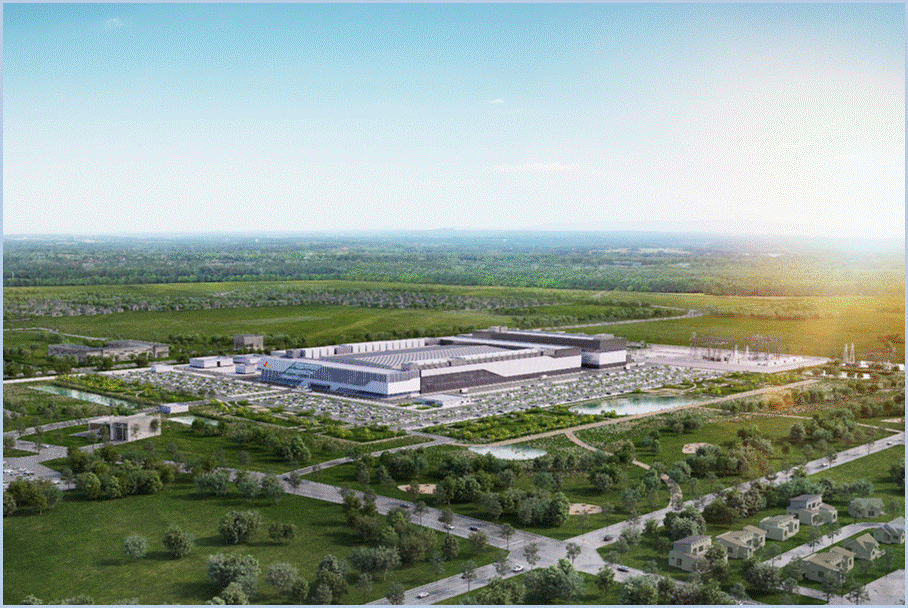
Question: Not even at Discovery Park District (west of Purdue’s campus), where SkyWater Technologies once was going to put a semiconductor facility?
Erin Easter: I don't know that there's enough acreage. I don't know that for certain, but that would be my best guess. And back to the question about safety, there's nowhere it can go there that's not near houses.
Question: You’re talking about, in that case, near Purdue dorms?
Erin Easter: You're near dorms, so you're near lots of students. You're near Provenance, you're near neighborhoods that are outside of the city limits. Environmental concerns are environmental concerns, regardless of where city boundaries are. If that were the case, it wouldn't be safe anywhere.
Question: Back to that first question about the APC vote. Were you stunned that it had come to that point? Or did you have some kind of sense that there were some rough roads coming for this big of a project?
Erin Easter: I think there would have been concern no matter what, because it's change. No matter what was happening at Site A or Site B, anything changing is change. And change is difficult from a planning perspective – which I think that in Tippecanoe County we do an excellent job of planning for the future – whether it's just the annoyance of what construction looks like. The question about dirt moving came up in a recent conversation I had with a community member. I raised the point that, you know, no matter what happens with it, dirt will be moving. And if there are concerns about fertilizer in that dirt (raised during public comment at the APC meeting), it's going to be the same concern no matter what. She commented, yeah, there's dirt all over, dust all over my house right now from the construction happening to the north of us. And those are houses.
There are little things like that that are mild level annoyances I think that come with a growing city. Obviously, where we are (right now at City Hall), we see a lot of that, as we see tower cranes flying through the sky. This side of town has seen a lot more of that over the last few years. It's certainly going to be different for the north end of West Lafayette. … No matter what happens at Site A or Site B, the view isn’t going to be the same.
Question: What's your message been to city council members about getting them comfortable with this. The last time I polled them, three were saying no, six were saying they weren’t sure. They really are the crux of the matter at this moment.
Erin Easter: They are. My responsibility to our council is to present them with information or provide the opportunity for them to learn, ask questions and gather the information they want on their own. Even if I didn't think this was inappropriate – and I don't think our council is susceptible to it – I'm not going to strong arm our council. They are elected by the people. They are also independent decision makers for the city of West Lafayette, and their role is different than my role in this. I respect the role that they have to play. We have made sure that we provide an opportunity for them to hear from SK hynix and ask very specific, pointed questions about things that they've heard or they're concerned about.
I think Dr. (Mark) Lundstrom posed this quite well: There is a large risk in failure. (“Purdue’s semiconductor leader: If West Lafayette misses on SK hynix, ‘we will never have this opportunity again.’ A Q&A,” Based in Lafayette, April 20.)
I think even our community members have recognized that, even if they would rather see Site A or over Site B. This happened at the APC meeting, too – we’re clear that they're supportive of the project. I think, generally speaking, our council absolutely understands the importance of this project to the city of West Lafayette, the importance of this project to Purdue and the state of Indiana. There is also the component that this is a national initiative. This is not solely a city of West Lafayette initiative.
Question: That said, I’m not sure I’ve seen a statewide, let alone a national, push on this. Or even a big local push outside that concentrated portion of West Lafayette. Is that something you’ve seen? If so, have you been surprised by that?
Erin Easter: I certainly noticed that. I don't know that I'm surprised by it.
Question: How so?
Erin Easter: I'll give you an example. I can see the lights of The Rise (high-rise development on State Street hill) from my house at night. It doesn't bother me. I know what it is. I chose to live close to campus because I like a vibrant, interesting, multi-generational neighborhood that is really fueled and feeds off of the energy of the university. But when I bought my house, those high-rises didn't exist. And I probably have neighbors who have left because they don't like it. I also have neighbors who see this the same way that I do, in that we’re solving a housing problem through growth, and sometimes that's going to mean vertical growth. It might not be what everybody anticipated was going to happen, but it is a problem that has to be solved.
Question: Do you see SK hynix as a similar kind of solution for a completely different aspect of the community – and, I guess, even the state and the nation?
Erin Easter: I do think there are parallels there, but we are simultaneously trying to solve so many problems. Change in a community creates discomfort everywhere. And we’re seeing how a changing community feels. The residents in the northern part of the city, especially in the neighborhoods adjacent to this question of SK hynix, have every right, and they should ask these questions. I want them to ask these questions. Those are completely reasonable questions for people to have.
Question: On Monday, Purdue President Mung Chiang, when speaking to the University Senate, put some of this back on you, specifically, along with others on campus to clear up what he called “misunderstanding and misinformation” raised about the SK hynix project – particularly about concerns raised by several faculty members who do semiconductor research at Purdue and also live in nearby neighborhoods. Number one, is that fair, when Purdue played such a huge role in bringing this company? And do you think that the university needs to play more of a role in either backing or disputing what researchers on campus came out and said – that SK hynix’s facility is not safe near their neighborhood?
Erin Easter: I think what's important, one, about attracting SK to this community in the first place; two, about the process we're in right now; and three, about what the future of that process looks like, is that this is a team game. It requires everyone to be playing on the same team for the same cause, consistently. Whether that is Greater Lafayette Commerce and the city of West Lafayette and PRF and Purdue University and all of our utility partners – and I will add the city of Lafayette and Tippecanoe County, or if that is a venture on the other side of the river that we also all show up for – our future community growth and prosperity only works if we do it together.
Question: So what, if anything, is going on to clear up what President Chiang called misinformation and misunderstanding from your standpoint?
Erin Easter: I have obviously had several conversations with SK and their team. I know that PRF and SK have been in contact with others in the Purdue ecosystem, but even beyond that, who have expressed the greatest amount of concern and have offered to meet with them independently. SK hynix has been willing to meet with people. … There are obviously the community meetings that we're holding. There are opportunities through my office and staff, as well, to answer questions about things that are reasonable for us to answer. I'm not a semiconductor expert. I'm not going to answer questions about how wafers are attached to processing boards and then connected through SK’s specific process. Nor am I an expert on how all of the robots are used in their facility. That's not mine to answer. I know that SK is ready to answer questions and is happy to meet with anyone to discuss their facility. …
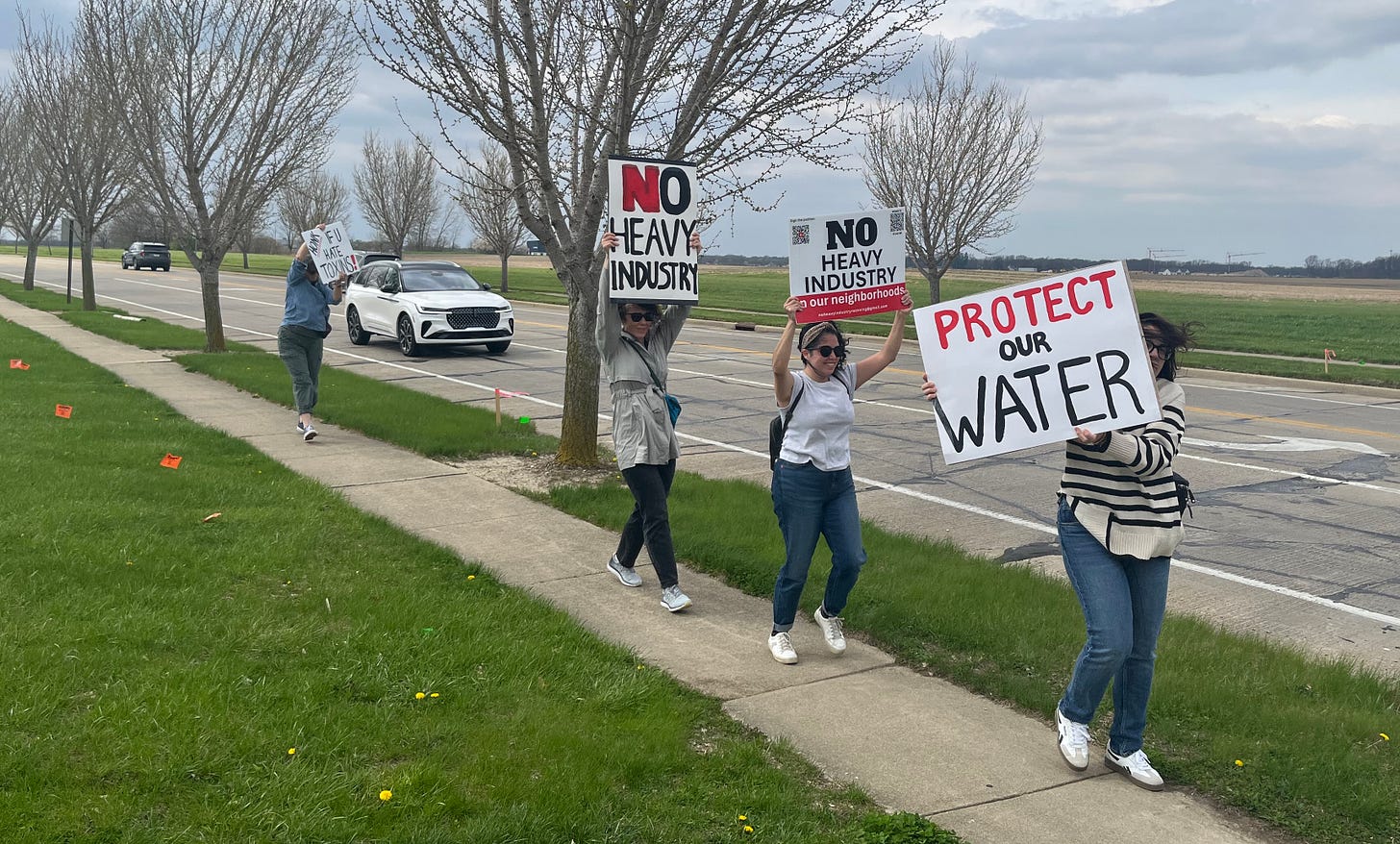
Listening again to the (March 19) APC meeting, a few things came up. One comment, in particular, was about SK not having to do an environmental review – which they do. Any federally funded project, which this is, does. Obviously it's far more intensive than a trail, but we have to go through this process when we build trails with federal money. The (National Environmental Policy Act) process is a very thorough one and one that SK will have to go through, no matter what. In addition to that, they have responsibility for complying with the Clean Air and Clean Water Act and the Resource Conservation and Recovery Act. On the statewide level, we have clean air and water and solid waste management, all of those laws that run through (the Indiana Department of Environmental Management) and compliance measures that they have to comply with. And then they have any local issues that they have to comply with, as well.
Question: How about concerns raised about water use? SK hynix says it will need an average of 2.8 million gallons a day.
Erin Easter: Indiana American Water is our water provider in West Lafayette. And they will be SK’s water provider. We do not allow direct well drilling in West Lafayette. That is a question that has come up before, and we have consistently said no to. SK didn’t ask that, but others have asked that. …
Before SK even agreed to come here, there's a part of the process where everybody's verifying that they can handle whatever the utility needs are for an organization. That's part of the very front end process that we have to verify and prove that we, as a community, can meet the needs that they have. That has happened, both with the city as a utility but also with the utility partners SK will have here.
A big difference between the conversations that were happening about (a proposed pipeline from Tippecanoe County to) the LEAP district (in Lebanon) and the conversations happening about this facility? One, 50 million gallons or 100 million gallons of water versus 2.8 million gallons is a really different calculation. Two, that water’s coming from and staying within our watershed. It isn't going somewhere else. … That's an important distinction that this water isn't being removed. It's being put back into this ecosystem where it can continue to be part of our area.
Question: So, you still have confidence in the company, in the effort and what they’re building?
Erin Easter: I do.
Question: What happens if that rezoning vote goes negative? NK Kim, a senior vice president with SK hynix, has said if that happens, the company would honor the community’s decision and go back to Site A, where zoning is set for what they plan to do. Do you believe that will be the case? Or do you think that maybe SK hynix says, yeah, maybe not West Lafayette …
Erin Easter: I can't presume that I know what their intentions are. We've been told that if Site B doesn't work, Site A will work. But I think, in all the conversations we've had, there is a commitment. As (former West Lafayette Mayor) John Dennis used to say, “Everything is nothing until it's something.”
Question: You actually told me that on the day SK hynix announced it was coming.
Erin Easter: I did, yeah. Because until we have people in a facility working and producing the most high-tech semiconductors that are being made in the world, until that's happening, it’s nothing. But we’re still confident in SK hynix.
Question: What still is happening in the city in terms of infrastructure and other things that have to happen – let's say rezoning does go through – to get them ready to go by 2028.
Erin Easter: I think it's important to recognize that Tippecanoe County, through our Metropolitan Planning Organization and through lots of other efforts, has been very thoughtful about preparing for the future – no matter what that future looks like. Whether we're talking about Yeager Road, which was recently upgraded, or we're talking about future roadways in the city of West Lafayette, these roads and these plans have been part of the thoroughfare plan for sometimes decades. We are consistently planning for both funding and the projects through the Metropolitan Planning Organization of the APC, and there has been a lot of thought, dedication, engineering and time put into what the future growth of West Lafayette looks like. Once upon a time, Cumberland Road didn't exist. This is the same planning and process that has happened for a future (County Road) 425 (North) and that has happened with Kalberer Road and Cumberland at some point.
In, I want to say it was 1958, West Lafayette invested in their wastewater treatment facility. You can see the remnants of that facility today. That was a big shift for the city of West Lafayette at the time, to appropriately treat waste from our city. Since that time, we've improved our process, we've expanded our plant, and we've dealt with the issues related to combined sewer overflow projects, which you've seen in both of the cities seemingly forever over the past 20 years. There’s a lot of planning that goes into all that.
In both instances, whether we're talking about 425 (North), or upgrades to future roads or expansion at the wastewater treatment facility, all of those things will need to happen, no matter what. SK hynix might expedite the timeframe that it has to happen, but not by much. Honestly, we were already looking at our water flows with so much new housing and figuring out when we would need to go through a plant expansion, anyway. (County Road) 425 (North) has been floated for a while. Even several years ago, we were having conversations with developers about having to reserve land for that roadway. …
So, no matter what happens, those infrastructure investments will happen anyway, because they have to. They're a necessity for a growing community. The benefit to having SK involved in that is that they're paying their share of those investments. …
Question: With wastewater treatment, how much of that is going to have to be upgraded to deal with new kinds of chemicals or other kinds of waste flowing from an industrial user that West Lafayette hasn't traditionally had to deal with?
Erin Easter: It's actually a good thing for West Lafayette to be looking at this now. In the next several months, we will be coming to our city council with an update to our sewer use ordinance, which defines acceptable limits for a defined group of things. Through that process and our own testing, there are things that we don't currently monitor or don't have a limit on that we will have an opportunity to limit as part of updating that sewer use ordinance. Our wastewater treatment facility is run exceptionally well, and they have some very smart scientists there monitoring our water. But it is an opportunity, as with anything, to better refine your process and the water constituents that you're willing to accept. … If we set a limit that we’re only going to take, say, 10 parts per million of something and we're finding that they're passing through more than that to us, there is a process for how that's dealt with, both at the local level and at the state level. It also forces them to refine their process, as well, so they're capturing more water constituents and not releasing them to us based on what we find to be acceptable for our treatment facility, for our community, for our waterways.
Question: Are there suppliers, among the 143 SK hynix says it likely will draw, that you expect will be heavy contributors to that waste question?
Erin Easter: I think that most of the suppliers, especially the ones that are very close by, are going to be those that are providing cleaning, technical services, restaurant services, these kinds of service based directly there. Let's say you have a robot that goes down and you need Joe’s Robot Shop to come show up and reprogram the robot. You want Joe’s Robot Shop to be right here. In those conversations, there's been a lot of clarifying about what kinds of suppliers are coming and what that really looks like. I think the other component is that it's not West Lafayette's responsibility or our intention to host 143 suppliers. This is a regional strategy, and we hope that our partners in Tippecanoe County and Lafayette and Montgomery, Warren, White, Fountain, Carroll, all of those counties also benefit. And that there are other suppliers that are maybe a two-hour drive away, and they also benefit.
Question: Mark Lundstrom, Purdue’s chief semiconductor officer, talks about how SK hynix might not create another Silicon Valley situation, but it would be a magnet for like-minded industries. Is West Lafayette ready for that?
Erin Easter: We have been planning for so many things for so long. From today's date to when these conversations first started, it has been three years. So we have had an idea of some of the things that we need to start planning for and preparing for. Housing is an obvious one. But we have well into 1,000 housing units planned, under construction or under design and on the way on the north end of town already. The most recent approved (Millbrook, from Carmel-based Estridge Homes) was 771. That's single family houses and doesn't include multi-family in that development right north of SK. Then all the homes to the east of Salisbury (Street).
Some of the other things that we've been thinking about are, how do we provide things that our community wants, that we know that they want, because they've asked us for it, through things like the Wabash River Enhancement Corp. plan? We asked for the Central Reach (along the riverfront) to be relooked at so we have a more thoughtful way of thinking about how we provide recreation and community amenities to the city of West Lafayette.
Another is our fire service. I think to the benefit of everyone about four years ago, our fire service started training with Lafayette Fire Department for their special response teams. And those special response teams deal with things like technical rescue, water rescue and haz-mat rescue operations. … We've been really proactive at making sure that our first responders are well trained in all of the ways that our community has the potential to change. I know we're having a conversation about SK hynix and hazardous materials. That's not the only place that currently exists where we might have to respond to that call someday. So we are, and have been, preparing to be as ready as we can be to respond quickly, efficiently, with strong knowledge of what we're dealing with and safely.
Question: People have brought up questions of SK hynix closing its facility and laying off 1,400 people in Eugene, Oregon, in 2008, after spending $1.5 billion to build a 1.2-million-square-foot factory in 1998. How concerned are you about having something like that repeat itself in West Lafayette?
Erin Easter: It's always a concern, I think, with anyone. State Farm (regional headquarters) was here for years, and they left. I understand that an advanced chip packaging facility is a little different than an office building, but that's a risk that you run no matter what. What I think is important is that between Purdue and SK hynix is the chance to create the R&D ecosystem that continues to improve on that technology, making that relationship and partnership with Purdue University even more critical to the R&D of the future of chips, but also to the long-term sustainability of technology companies in West Lafayette.
Question: What’s the situation with the negotiations on an Innovation Development District with the Indiana Economic Development Corp? Is the city any closer to terms with the IEDC? Or has the rezoning question put that off the table for now?
(For context: The city has been waiting for months to finalize a deal over SK hynix’s state incentives and what West Lafayette can expect by giving up control over the bulk of property tax revenue from the site to the IEDC under an Innovation Development District agreement that guarantees local governments 12% of the revenues. See this from January: Vote clearing way for IEDC’s SK hynix incentives put on hold, as West Lafayette awaits deal.)
Erin Easter: We've paused that for a bit. ... For us, there's no point in us approving anything until we know the location.
Question: Are there any sticking points right now between what the city is asking for or demanding and with what the IEDC and the state are willing to give up?
Erin Easter: There are a few things relative to the conversation about water transfers. We wanted safeguards in the language of that agreement.
Question: Are you talking about the LEAP district pipeline? Would this be a chit used to defend the community against the IEDC’s pipeline concept (aimed at shipping water from western Tippecanoe County to the 9,000-acre LEAP district in Lebanon)?
Erin Easter: Correct.
Question: Interesting strategy.
Erin Easter: That was an ask that we had. We felt very strongly that we couldn't have an agreement that didn't also have those protections.
Question: Is that a sticking point still? Or do you believe the IEDC is on board with that?
Erin Easter: We are still working through contract language, but we have a tentative agreement.
Question: Any other issues with that? This is only the second IDD in the state since the law went into effect.
Erin Easter: The statutory 12% comes to underlying taxing groups like us, like the schools. The rest of the money was then negotiated and a set amount was dedicated for SK’s benefit and then a set amount for the city's benefit. … Those dollars will be used for paying for projects in service to SK. That means maybe it's one of the funding streams for the roadway. It can also be for riverfront redevelopment that really takes an amazing vision of what the Wabash Riverfront can be, particularly with so many communities having to comply with their Clean Water Act and CSO programs. It could be part of an expansion for Fire Station No. 3 (on Kalberer Road). I know there's been concern about SK being located next to a fire station. There's good reason for it to be located next to a fire station – in the event that something happens, you want emergency management there fast. …
Question: What’s your prediction about how this will turn out, heading toward the May 5 city council vote?
Erin Easter: I don’t know if I have a prediction. I do have a long-term vision that SK is a net positive for the community – that it has the kind of remarkable change for West Lafayette that very few corporate partners do. And that long term, we can work on really exciting things together, like the riverfront … like building out and continuing to support a high level of education within West Lafayette and support things like parks and nature preserves and robotic programs and whatever that looks like. That would be up to SK to decide. But there's a huge opportunity for us long term to continue building on this really smart, hardworking community that we have.
WHAT’S NEXT
FORMAT SET FOR THURSDAY’S COMMUNITY MEETING: SK hynix officials, looking to persuade the community about the project, have scheduled three community meetings about their plans. The second will be 6:30-8:30 p.m. Thursday, April 24, at the West Lafayette Wellness Center, 1101 Kalberer Road.
According to the company, the format will be less of a public presentation and Q&A session – as it was during an April 11 session – as it will be a station-to-station setup to answer one-on-one questions over the two hours. Three stations will focus on safety, health and the environment; about SK hynix and a project overview; and what the company called “semiconductor introduction.” SK hynix representatives will be at each station to answer questions.
A third community meeting will be 9-11 a.m. Saturday, May 3, at a location still being determined.
SK HYNIX LAUNCHES AN FAQ SITE: The South Korean semiconductor company and Purdue Research Foundation on Tuesday released a website with their plans for a $3.87 billion R&D and advanced chip packaging facility expected to open for production in 2028 and eventually employ 1,000 people in West Lafayette. The FAQ offers SK hynix’s answers to questions raised recently about site selection and the company’s approach to environmental, waste handling, traffic and other issues. According to the company, the website will include additional content in the coming days. For now, here’s a way into a page about “Project Neuron,” which was the code name used when recruiting SK hynix to the Purdue Research Park: neuron.prf.org
MORE COVERAGE: Here’s how the site planning and rezoning issues for SK hynix have played out over the past month:
March 16: SK hynix eyes new WL site for $3.87B chip facility, up for rezoning this week
March 20: Rezoning for $3.8B SK hynix facility gets thumbs down from APC
March 23: WL City Council survey: Still unsure on SK hynix rezoning
March 26: Rezone request for $3.8B SK hynix facility on hold, for now
April 19: Neighbors take to streets to protest $3.87B SK hynix chip site in West Lafayette
April 23: A short timeline of public discussions about SK hynix’s site
Thank you for supporting Based in Lafayette, an independent, local reporting project. Free and full-ride subscription options are ready for you here.
Tips, story ideas? I’m at davebangert1@gmail.com.


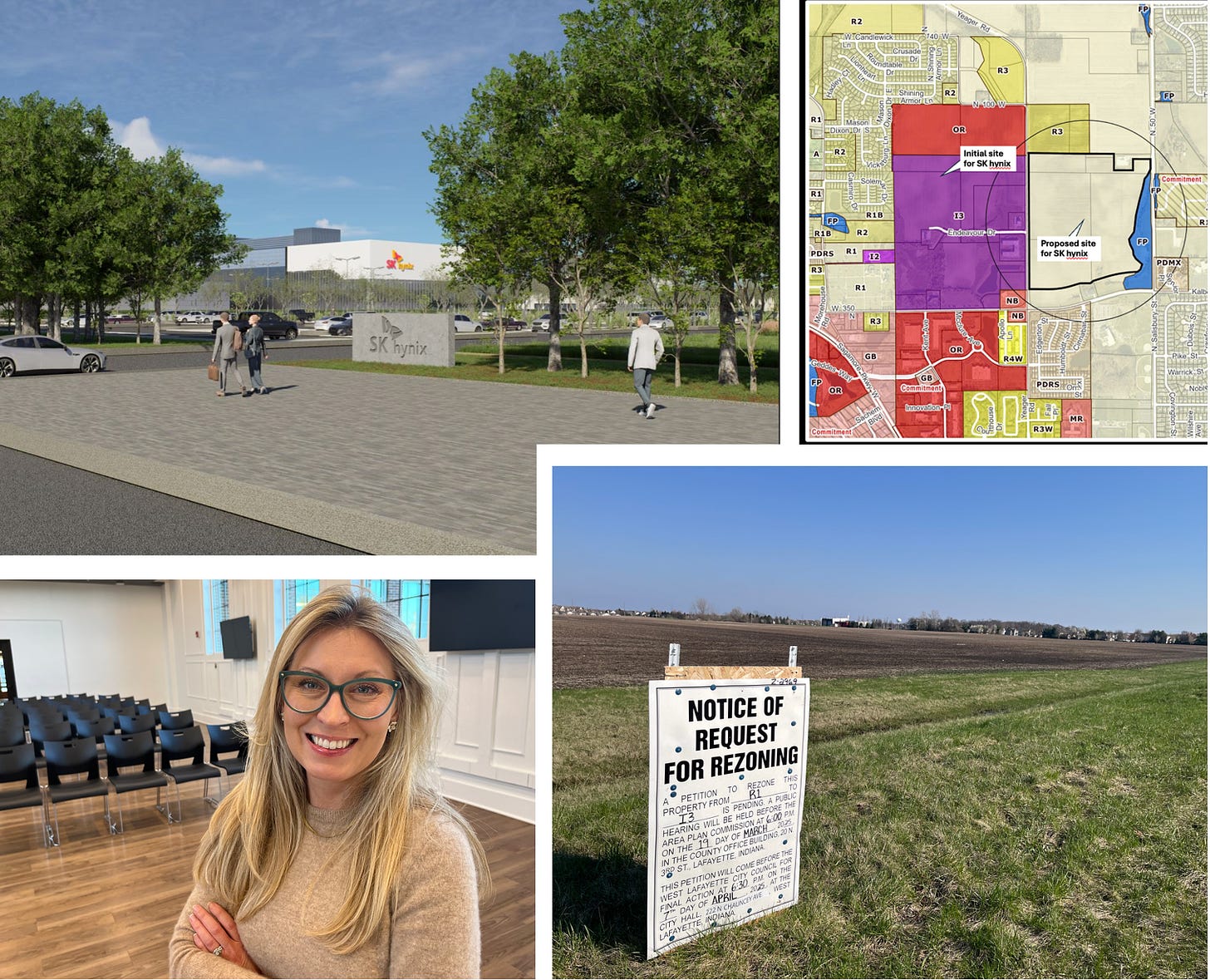
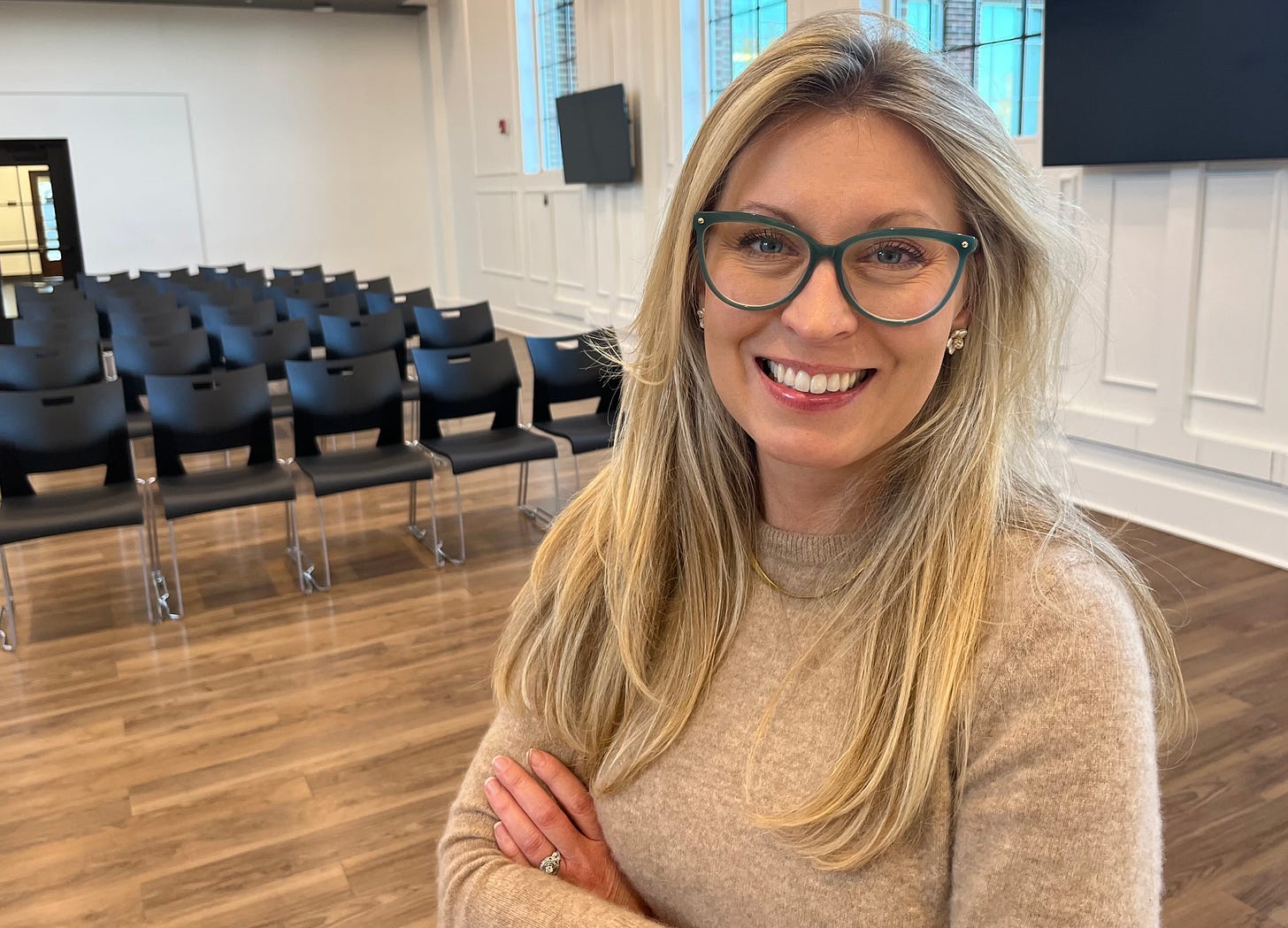
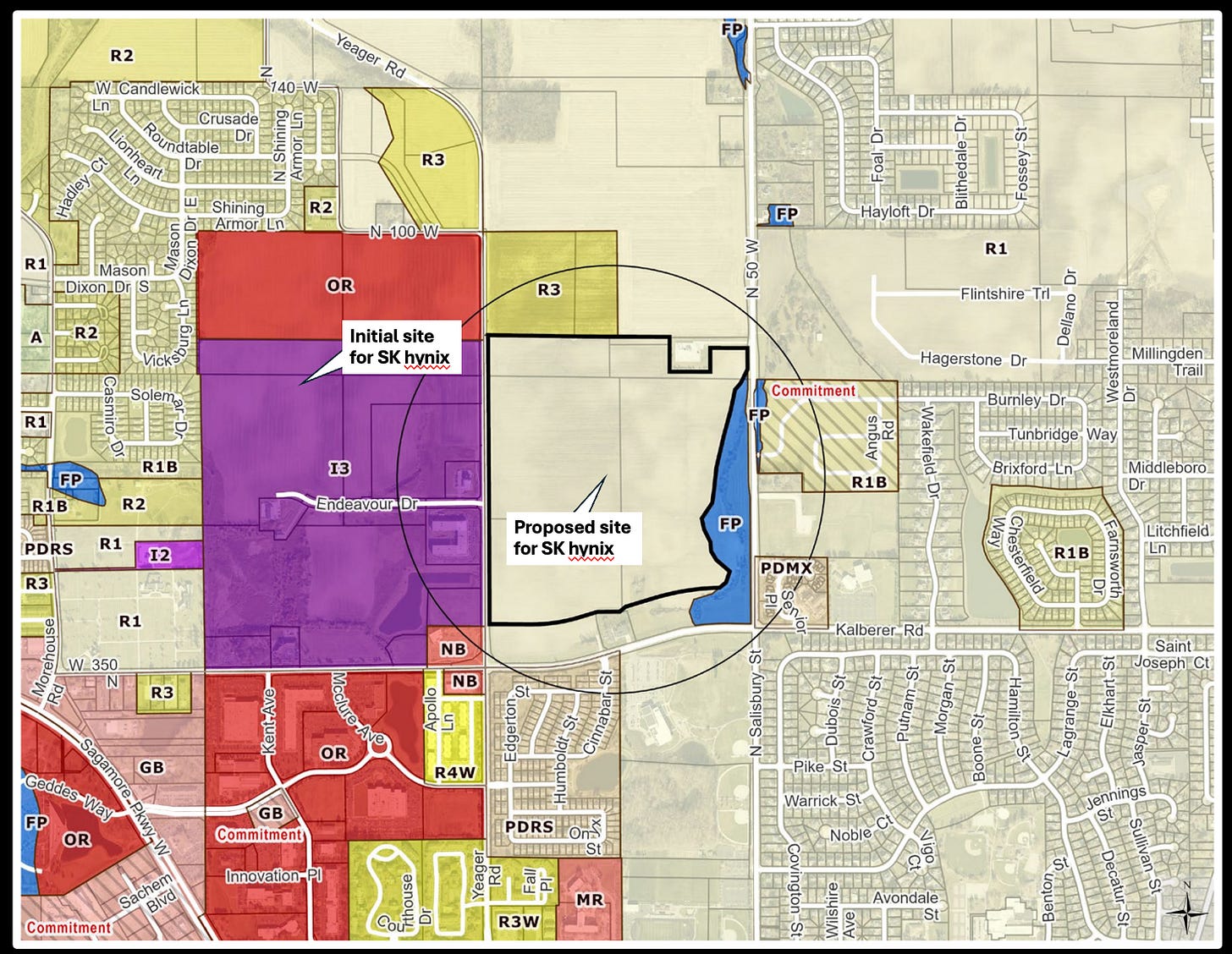
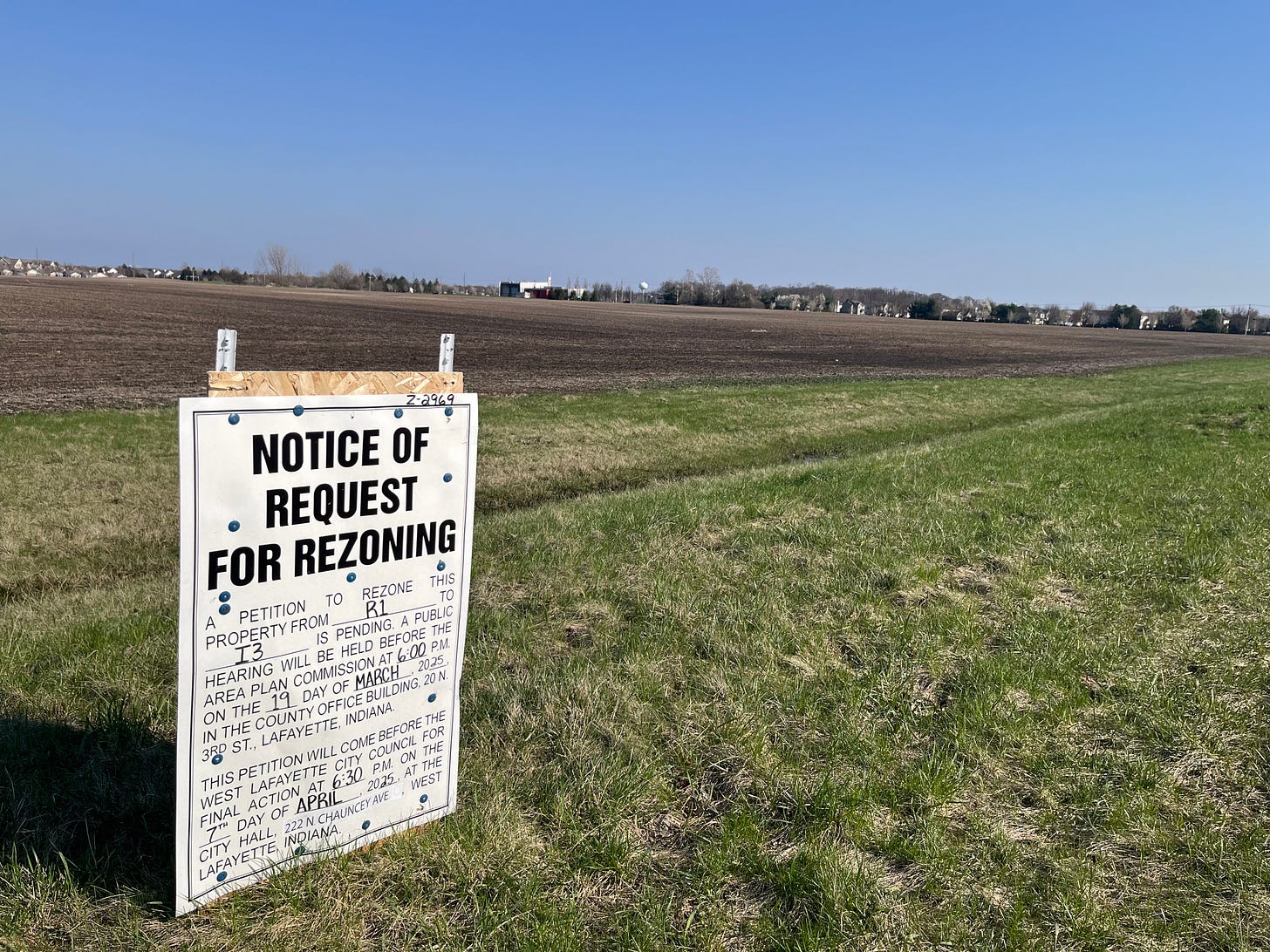
I like these stories which illustrate the capacity for listening and persuading from multiple sides of an issue.
West Lafayette citizens made an excellent decision voting for Mayor Easter. Plus, the bonus of BiL, Dave Bangert. 👏